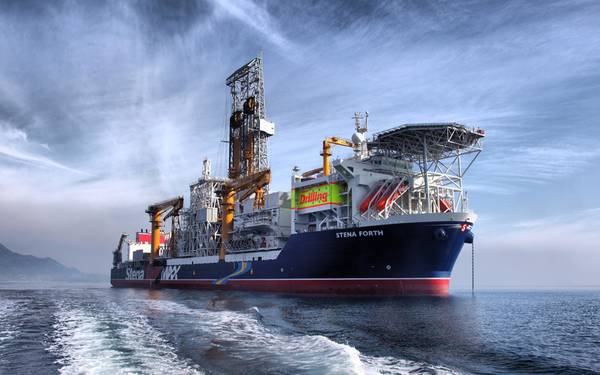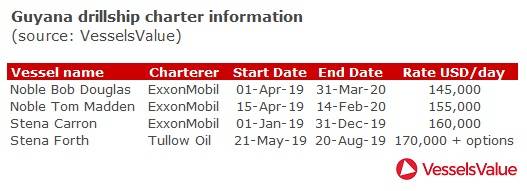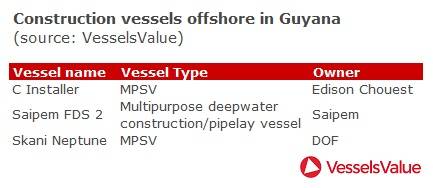
Guyana, located on the northern mainland of South America and nestled between Venezuela and Suriname, has become one of the most exciting regions within the oil and gas industry over the last few years. ExxonMobil has invested heavily in the region and has been reaping the rewards since first discovering oil in 2015. In the Stabroek field alone to date, the company has made 13 discoveries with an estimated recoverable resource of $5.5 billion. With the US supermajor showing no signs of slowing down, this figure is undoubtedly set to increase.
ExxonMobil is not alone in the region; Tullow oil has recently started drilling operations on the Jethro Lobe prospect on the Orinduik field. The exploration well on the Jethro Lobe prospect was spudded at 22:45 local Guyana time on July 4 this year, using the Stena Forth drillship which was mobilized from West Africa.
In either case, Guyana is certainly on the oil and gas map, and the next few years are going to be a very interesting time for the country and the industry.
Interestingly, this increased exploratory activity has begun to filter down to the supply boat sector. Currently the largest player in terms of vessel numbers in Guyana is US Gulf of Mexico powerhouse Edison Chouest, which has nine platform supply vessels (PSV) working in the region. The next closest competitor is Swire Pacific Offshore with three PSVs.
 Offshore supply vessel company breakdown for the regionIn terms of activity, we can see it is centered around the Liza Deep and Liza Phase 2 fields with the majority of PSVs supporting the drilling activity of the Noble Bob Douglas and Noble Tom Madden. There are currently four drillships working offshore in Guyana, the two aforementioned owned by Noble Drilling, and the Stena Carron and Stena Forth owned by Stena Drilling.
Offshore supply vessel company breakdown for the regionIn terms of activity, we can see it is centered around the Liza Deep and Liza Phase 2 fields with the majority of PSVs supporting the drilling activity of the Noble Bob Douglas and Noble Tom Madden. There are currently four drillships working offshore in Guyana, the two aforementioned owned by Noble Drilling, and the Stena Carron and Stena Forth owned by Stena Drilling. Current charter information for each drillship offshore Guyana.With ExxonMobil recently announcing plans to actively pursue significant development potential from numerous discoveries in the Stabroek Block, momentum in the region remains high. This momentum could lead to more drillships entering the region and tempt others to mobilize their vessels south, away from their traditional US Gulf of Mexico waters.
Current charter information for each drillship offshore Guyana.With ExxonMobil recently announcing plans to actively pursue significant development potential from numerous discoveries in the Stabroek Block, momentum in the region remains high. This momentum could lead to more drillships entering the region and tempt others to mobilize their vessels south, away from their traditional US Gulf of Mexico waters.
This is certainly the case for one major US owner: Harvey Gulf recently announced it had opened an office within the region and had won contracts in both Guyana and Suriname. The Harvey Power (5,400 DWT, 2015, Trinity) and Harvey Eagle (2,700 DWT, 2010, Thomas Sea) are currently working in the region supporting the Stena Forth drillship. Indeed, the activity has not restricted itself to supply vessels and mobile offshore drilling units (MODU); offshore construction vessels (OCV) are also benefitting from Guyanese activity.  Construction vessels in the regionUtilizing VesselsValue’s forward commitment module, we can see the Saipem FDS 2 multipurpose deepwater construction/pipelay vessel’s forward work schedule. The Saipem FDS 2 is booked to work in Guyana up until late 2021 for ExxonMobil, highlighting the oil major’s large scale development plans for the block and field.
Construction vessels in the regionUtilizing VesselsValue’s forward commitment module, we can see the Saipem FDS 2 multipurpose deepwater construction/pipelay vessel’s forward work schedule. The Saipem FDS 2 is booked to work in Guyana up until late 2021 for ExxonMobil, highlighting the oil major’s large scale development plans for the block and field.



